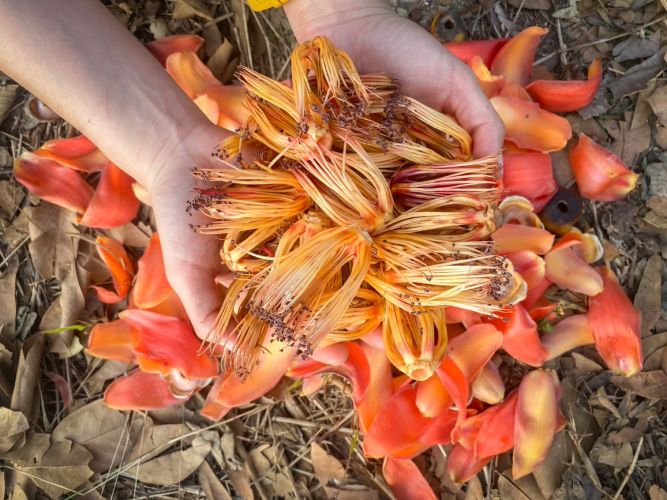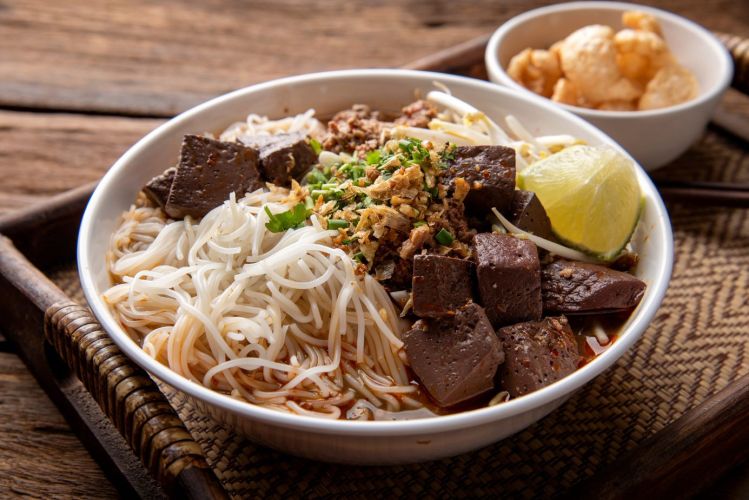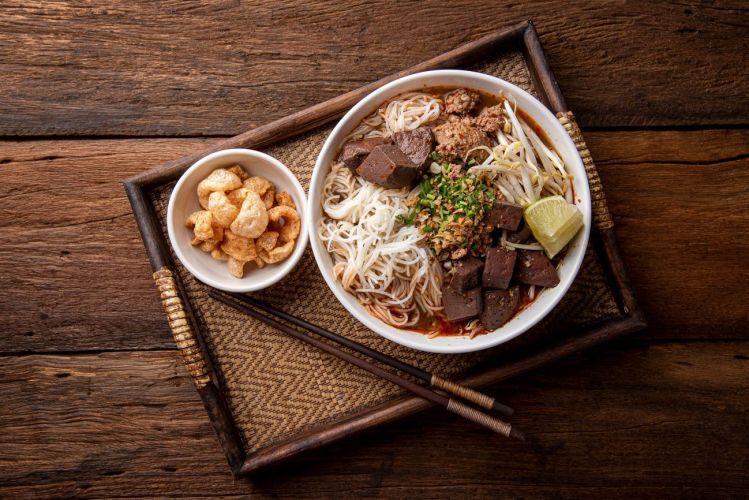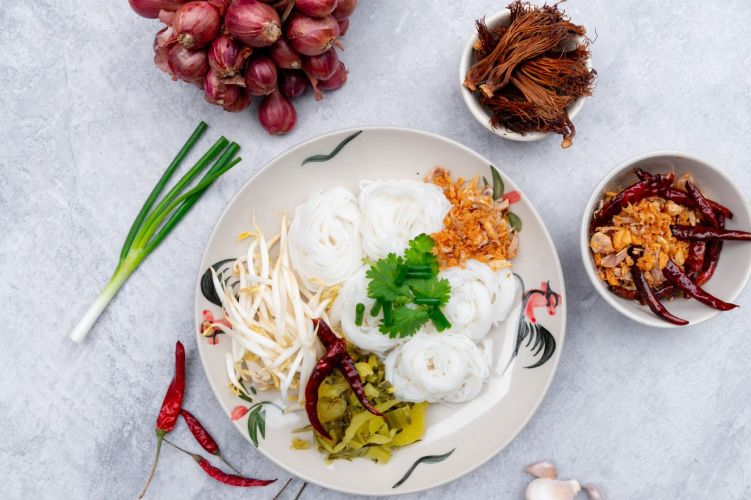Thai Cave Rescue (ถ้ำหลวง: ภารกิจแห่งความหวัง) from Netflix is a series that not only takes viewers back to an incident that was followed closely by Thais and people from around the world. It also offers glimpses into the culture, beliefs, and ways of life of the rural northern province, including the traditional food in a small subdistrict of Mae Sai District in Chiang Rai Province.
“Nam Ngiao” or “Khanom Jeen Nam Ngiao” is a popular local Northern Thai delicacy, especially around upper-Northern Thailand. However, tracking back through its history, you will find that it did not originate in Lanna (Northern Thailand). This dish is believed to have originated from the Ngiao or Shan people from Shan State in Myanmar. Bringing it with them when they moved to Lanna due to the war between Shan State and Myanmar, they called this dish “Nam Hmaak Khuea Som” and called “Khao Soi Ngiao” when eaten with noodles or “Khao Sen Nam Mak Khuea Som” when eaten with rice noodles.
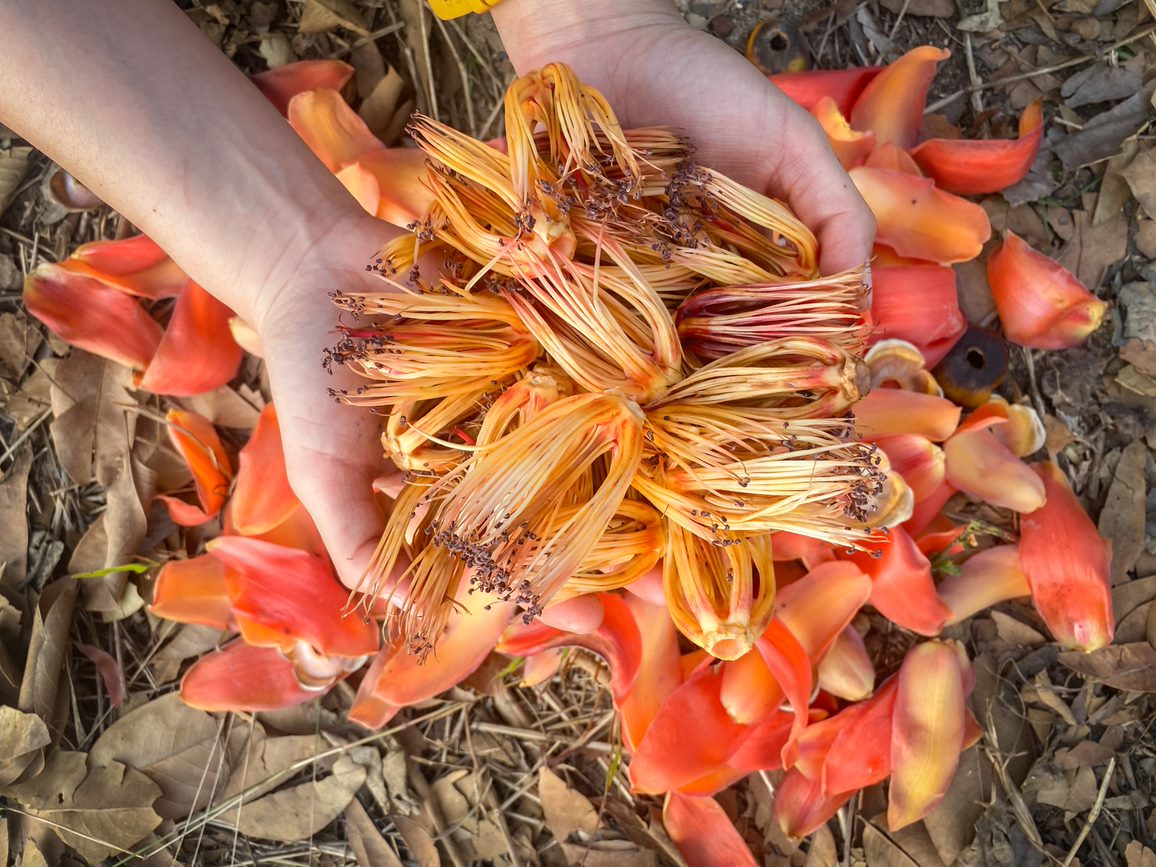
There are several theories about the name “Nam Ngiao.” One is because of its core ingredient: pollens from red silk cotton trees, or ngiew. The pollen was dried and added to the curry soup to add the aroma and taste which is unique to Nam Ngiao. Another theory is derived from the word “Ngiao,” which is the name by which Thais used to call Shan people, although this is considered a derogatory term and offensive to the Shan people.
After the recipe was adapted to create a localized Chiang Rai version of the dish, it is distinguished from the variations in other parts of the north as it is richer. Unlike normal Thai soup, Nam Ngiao is not clear. Another unique characteristic is that it can be eaten not only with rice noodles but also with other kinds of noodles, such as large strip noodles, egg noodles, etc., which create different tastes and textures.
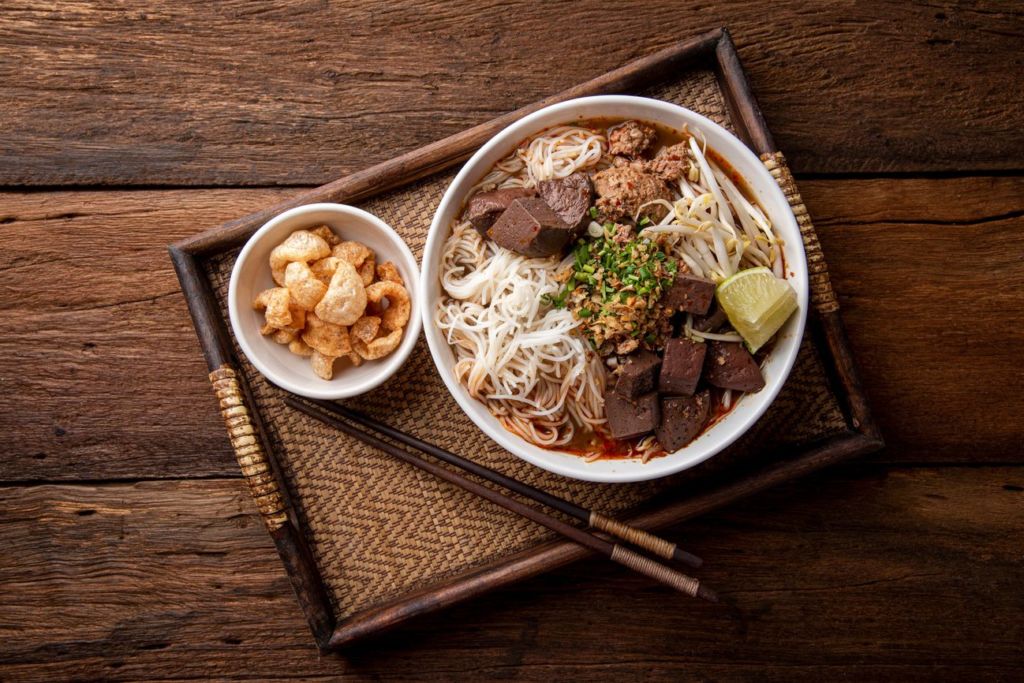
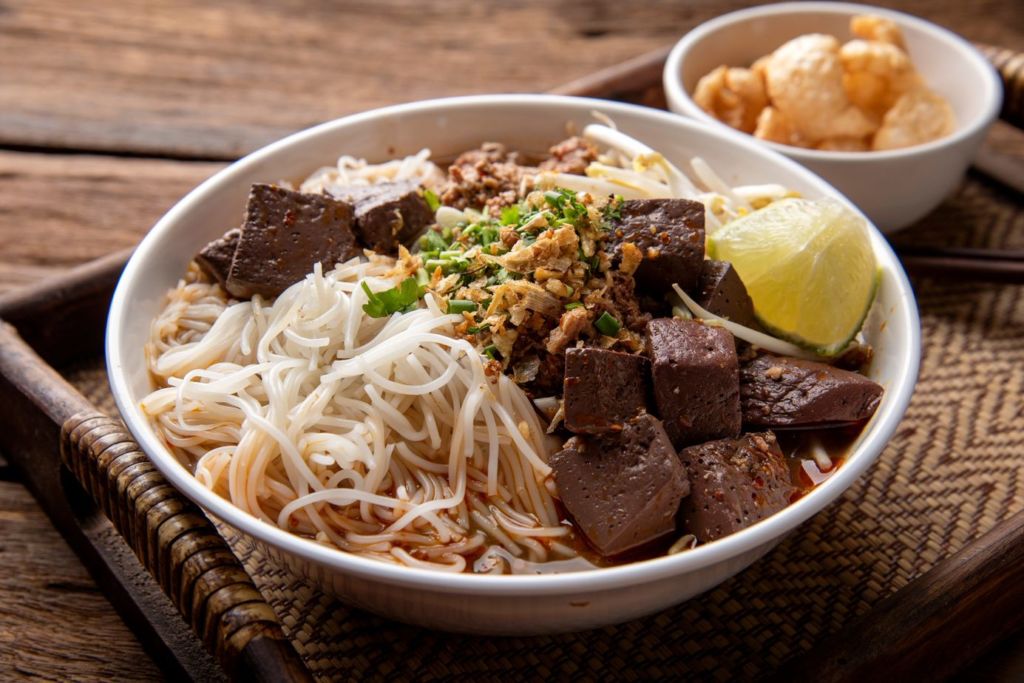
The original Chiang Rai Nam Ngiao recipe includes either pork or beef, but beef gives a richer flavor. Nowadays, however, some variations have added chicken feet, which give it even more taste and complex textures. The curry is similar to Central Thailand’s orange curry in that it uses dried chilies, but instead of adding finger roots, it uses either soybean pastes or fermented soybean sheets, or both. These additions create an overall flavor that is salty and spicy in contrast to the mildly sour flavor of the tomatoes. Usually, Nam Ngiao comes with a variety of vegetable side dishes like fresh beansprouts, young river tamarind leaves, chopped banana blossom, chopped cauliflowers, leeks, coriander, and more. It can also be served with pork rinds and Khao Gun Jin (pork-blooded rice with steamed banana leaves).
Today, Nam Ngiao has become one of local Lanna cuisine’s signature dishes that remains as popular now as it has ever been. It is usually served at parties as “lucky” food. If you visit Chiang Rai, the local version of Ngam Ngiao is a must for an authentic taste of this charming northern province.

